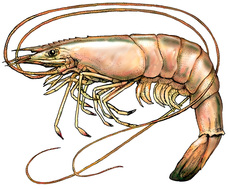
Goods bought and sold at the estate of Cui Shi: Itinerant Hindu saints have used it in India for centuries. Herodotus wrote about early ceremonial practices by the Scythians, thought to have occurred from the 5th to 2nd Century B.C. There are several references in Greek mythology to a powerful drug that eliminated anguish and sorrow.

Typically, Bhang is the most commonly used form of Cannabis in religious festivals.The third, called Charas or Hashish, consists of the resinous buds and/or extracted resin from the leaves of the Marijuana plant.The second, Ganja, consisting of the leaves and the plant tops, is smoked.It is usually consumed as an infusion in beverage form, and varies in strength according to how much Cannabis is used in the preparation. The first, Bhang, consists of the leaves and plant tops of the Marijuana plant.There are three types of Cannabis preparations used in India and Nepal. The earliest known reports regarding the sacred status of Cannabis in India and Nepal come from the Atharva Veda, which mentions Cannabis as one of the “five sacred plants”. Peasants commonly wore clothes made of Hemp, wool and ferret skins. Coats made of badger or fox fur, duck plumes and slippers with inlaid leather, pearls and silk lining. Wealthy folk could afford silk robes, skirts, socks and mittens. The types of clothing worn and the materials used during the Han period depended upon social class. Nomadic tribes from the East migrate into the Mediterranean regions and eventually Europe. Modern synthetic materials (often Dacron) are now commonly used for strings. They are attached to the wood via horn “nocks” that fit onto the end of the bow. Bow strings were, and still are, made of Hemp, flax or silk.The earliest longbow known from England, found at Ashcott Heath, Somerset. Cannabis, as Hemp fabric and cordage, medicine, and food has been incorporated into virtually all cultures of the Middle East, Asia Minor, India, China, Japan, and Africa. Including ailments to fight malaria, rheumatism and as a sédative. Cannabis called a “superior” herb in the world’s first medical text, Shen Nung’s Pen Ts’ao, in China. -Textile archaeologists found the first traces of woven Hemp in Kazakhstan.Yangshao culture amphora with Hemp cord design. The Yangshao culture produced silk to a small degree and wove Hemp. Clothing was sewn from plain-weave wool, Hemp cloth, silk fabrics, felt, leather and hides.

Archaeology has confirmed the use of Cannabis in funeral rituals. Herodotus reports that Scythians used Cannabis, both to weave their clothing and to cleanse themselves in its smoke.Linen and Hemp have been grown on the banks of the Ripoll river since the Middle Ages. Wine, olive tree, wheat, dried fruit and nuts complemented by products of the vegetable garden.Castellar del Vallès is a municipality of Catalonia in the comarca of Vallès Occidental. Including over 50% of the fabric called linen. Hemp is woven into fabric and grows in popularity over time on a global scale to eventually provide over 80% of all textiles and fabrics. Civilization, agriculture and Hemp textile industries begin in Europe and Asia.The oldest relic of human history is Hemp fabric dated to 8,000 BC from ancient Mesopotamia, an area in present-day Turkey. Hemp was the first plant known to have been domestically cultivated. The first known Hemp rope was found in Czechoslovakia in 1997 and dated from 26,900 B.C.


 0 kommentar(er)
0 kommentar(er)
